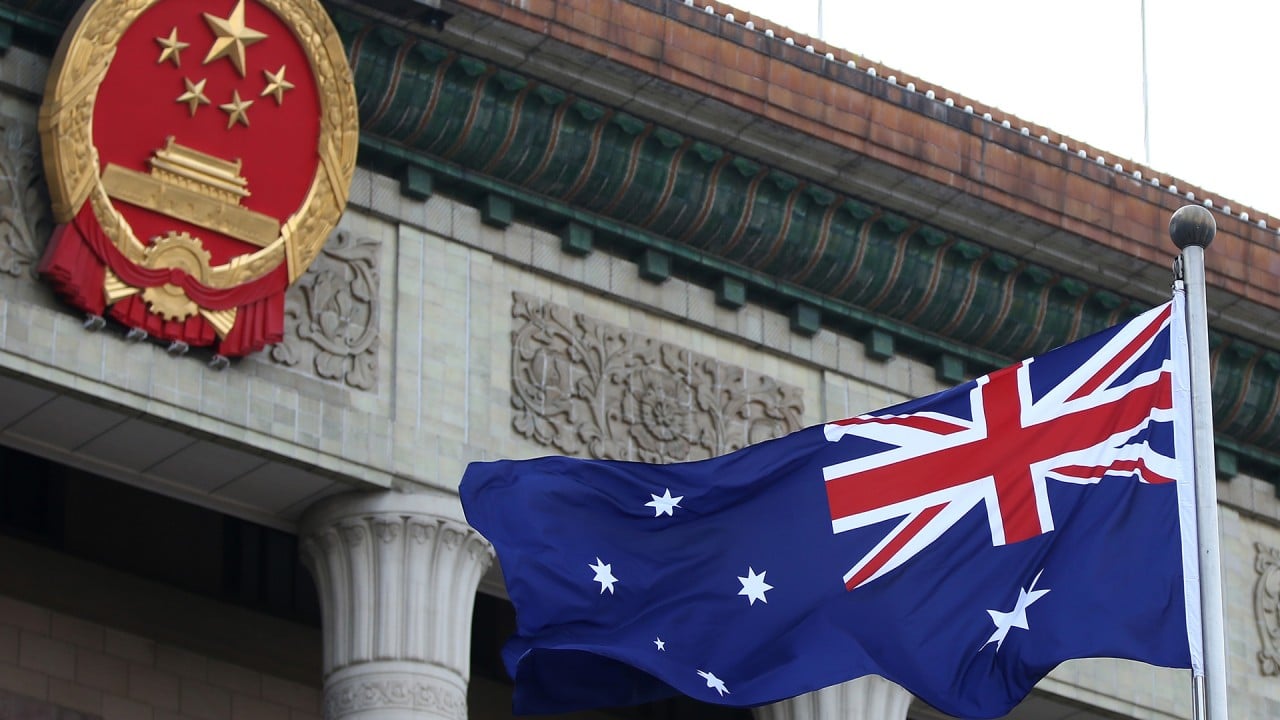
Exclusive | China-Australia relations: more than 23,000 litres of wine stopped at Chinese ports as trade spat continues
- Batches of wine from Penfolds and Badger’s Brook Estate are the latest to be held up at Chinese ports, reportedly over labelling issues
- Beijing has unofficially banned several Australian imports, but a top Chinese trade official on Wednesday expressed interest in restoring ties
More than 3,000 litres of wine from Penfolds and nearly 20,000 litres from a second Australian winery, Badger’s Brook Estate, were detained at Chinese ports last month as an import ban continues to hit Australian products, the latest Chinese customs data shows.
Some 675 litres of the 2018 Penfolds Bin 128 red wine and 2,700 litres of Penfolds Bin 28 from the same vintage were stopped by Shenzhen customs last month due to poor labelling.
In Chongqing, a municipality in southwest China, a variety of red and white wines across seven batches totalling nearly 20,000 litres were also held back over the same problem.

01:51
Australian journalist Cheng Lei formally arrested in China for ‘illegally supplying state secrets’
Badger’s Brook, which is based in the state of Victoria’s famed Yarra Valley, did not respond to requests for comment.
China’s customs agency did not provide details on the nature of the labelling issue.
What’s happened over the last 10 months in China-Australia relations?
The preliminary duties will be in place until the investigation concludes in August, after which new duties could be calculated depending on the outcome.
China has made it clear it no longer wants Australian wines amid the ongoing political differences, said a trade consultant based in Beijing who did not want to be named.
“If an exporter is still willing to test the new rules, then they will probably be stuck,” she said.
The restrictions have stopped Australian wine exports to China in their tracks since November.
The value of Australian wine exports to China fell to A$58 million (US$45.8 million) in November from A$135 million in the same period a year earlier, said Wine Australia, a government body that regulates the industry, in an outlook earlier this month.

09:18
Will iron ore be dragged into the ongoing China-Australia trade conflict?
The number of Australian firms exporting wine to China fell from 832 before the anti-dumping duties were imposed to 48 in the final month of 2020.
Before the block on trade, China imported nearly 40 per cent of Australia’s wine exports, an amount worth about A$1 billion a year.
“Exports to mainland China will be constrained while the tariffs remain in place and any exports are likely to be higher-priced products that are less price sensitive and are better able to absorb the price increases. In addition, some products may be sent in bulk and be bottled in-market,” Wine Australia said in the outlook.
China’s trade restrictions have hit Penfolds owner Treasury Wine Australia’s bottom line hard. This month, the company, one of the biggest winemakers in the world, announced a 43 per cent slump in its first-half net profit. China had previously made up a third of the company’s profits.

07:55
Australia ditched diplomacy for ‘adversarial approach’ to China and ‘a pat on the head’ from US
The company has started redirecting its wine exports to other markets.
In China, the trade block has also resulted in fake versions of the popular Penfolds wine appearing on supermarket shelves, some bearing names such as “Penfunils” and “Benfords”.
An analysis released on Tuesday by research institute Future Directions International said Chinese economic coercion was often driven by domestic factors – the protection of the Chinese winemakers in this case – as much as bilateral relations.
Wine is not the only product suffering in the 10-month long conflict between the two countries, which was triggered when Australia called for an international inquiry into the origins of the coronavirus.
Vessels bearing Australian coal remain stranded off the coast of China waiting to unload their cargo, while log imports from Australian states were held up late last year.
It is a pity that in Australia, some people have stigmatised the normal economic and trade cooperation
On Wednesday, China’s Ministry of Commerce said the two-way trade relationship – which is worth about A$240 billion – deserved to be “cherished and valued by both sides”.
“It is a pity that in Australia, some people have stigmatised the normal economic and trade cooperation … and adopted some restrictive and even discriminatory measures,” vice-minister Wang Shouwen said during a press conference.
“We believe that this has harmed the atmosphere of bilateral economic and trade cooperation.”
“We hope that Australia can do more things that are conducive to increasing mutual trust and cooperation, and do more things that are conducive to the strategic partnership between the two countries.”

